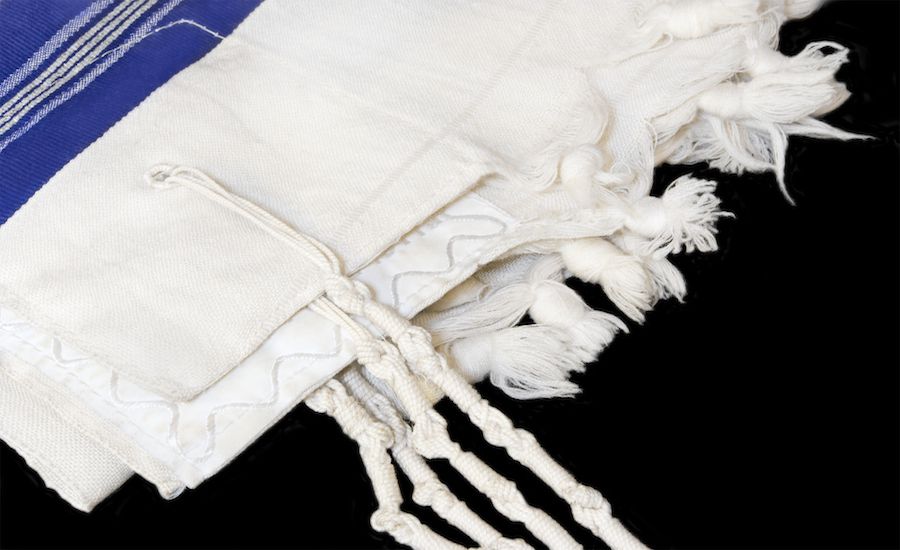I bought my first tallit, or prayer shawl, on a visit to Jerusalem. I had known for a long time of the Jewish practice of wearing a tallit, especially during morning prayers and during all prayers on Yom Kippur. The tallit has special twined and knotted fringes known as tzitzit attached to its four corners. I had even—on a couple previous occasions—joined a crowd of men in tallit to pray at the Western Wall, or Kotel, the holy site where the Jerusalem Temple once stood. And I knew that Jesus himself wore one, from several stories in the Gospels.
But it was only on my return from Israel that I began occasionally donning a tallit in my prayer times.
The word tallit or talith comes from the Hebrew word tal, meaning “tent”; the ending it or ith denotes “little.” It functions as a personal tabernacle, a little tent that observant Jews can wear everywhere, constantly, and so—no matter where they might be—enter into a prayer closet.
So in his mishnah (the collection of a rabbi’s main teachings), Jesus said:
“And when you pray, do not be like the hypocrites, for they love to pray standing in the synagogues and on the street corners to be seen by men. I tell you the truth, they have received their reward in full. But when you pray, go into your room, close the door and pray to your Father, who is unseen.” (Matthew 6:5-6, NIV)
I picture him as he says that last sentence pulling his tallit up, covering his head and drawing it closed in front of his face to form a private prayer tent, an always-available prayer room.
I think it’s a beautiful picture. And it is one that has informed and transformed my prayer life. Sometimes, when I drape the tallit over my head and shoulders and pull it close, I experience a focus and intensity in prayer that often escapes me at other times. It covers me—physically and symbolically—in prayer.
In fact, though most of the time my tallit stays at my prayer chair in my home office, I have decided to explore other ways of “covering” myself in prayer.
Donning a favorite hat might prompt a short “presence prayer” as I leave the house. As I put on a special sweater or jacket I might ask for the grace to put on the full armor of God, too (Ephesians 6:10-18).
Pulling up a hood on a garment might prompt me to pray a prayer based on Psalm 91:4: “He will cover you with His pinions, and under His wings you will find refuge; hHs faithfulness is a shield and buckler” (ESV).
Using one of these triggers—or devising one or more of your own—can be a means of regularly covering yourself in prayer. Of reminding yourself that God is there. And hiding in the safety of His presence.






